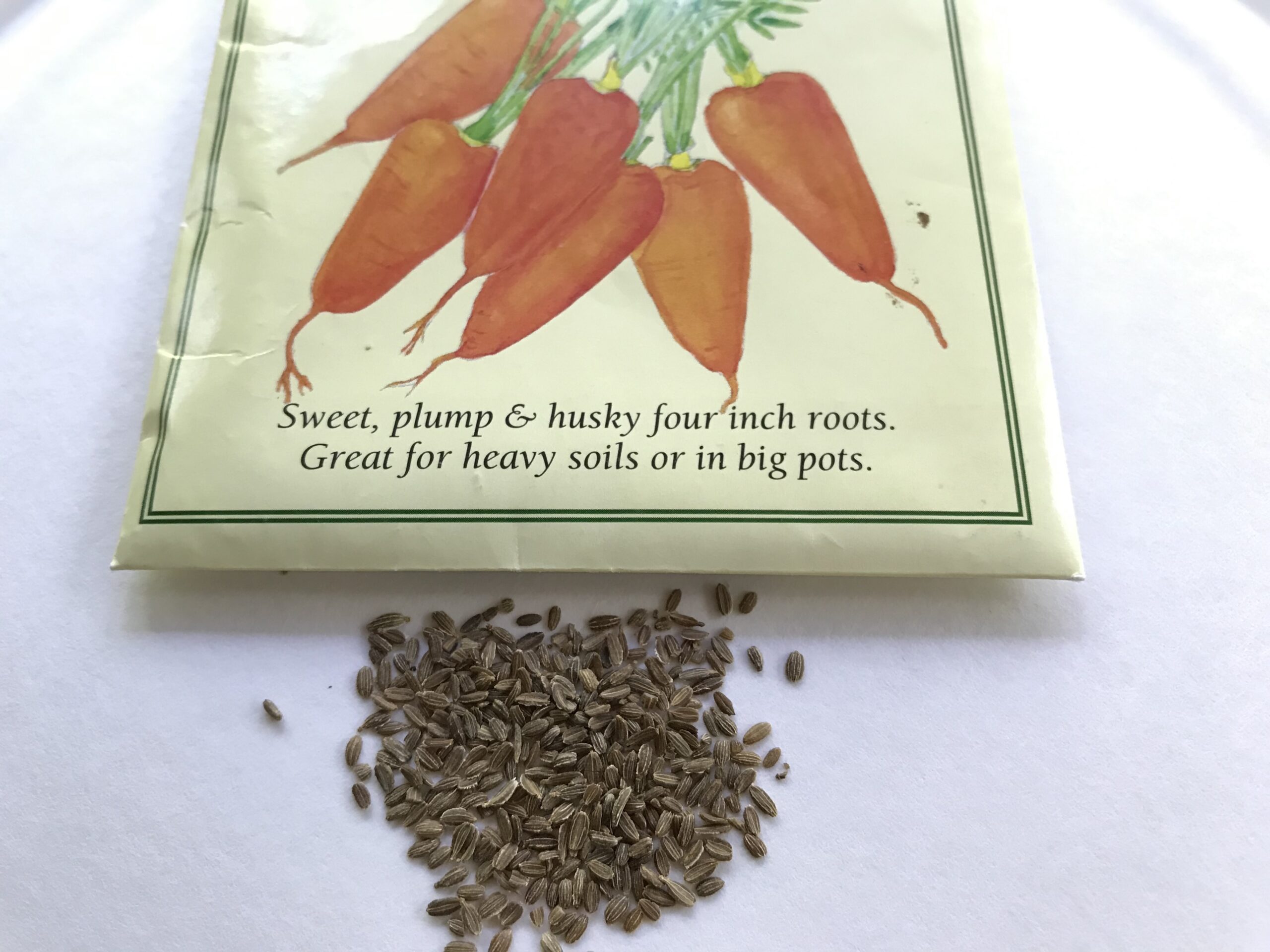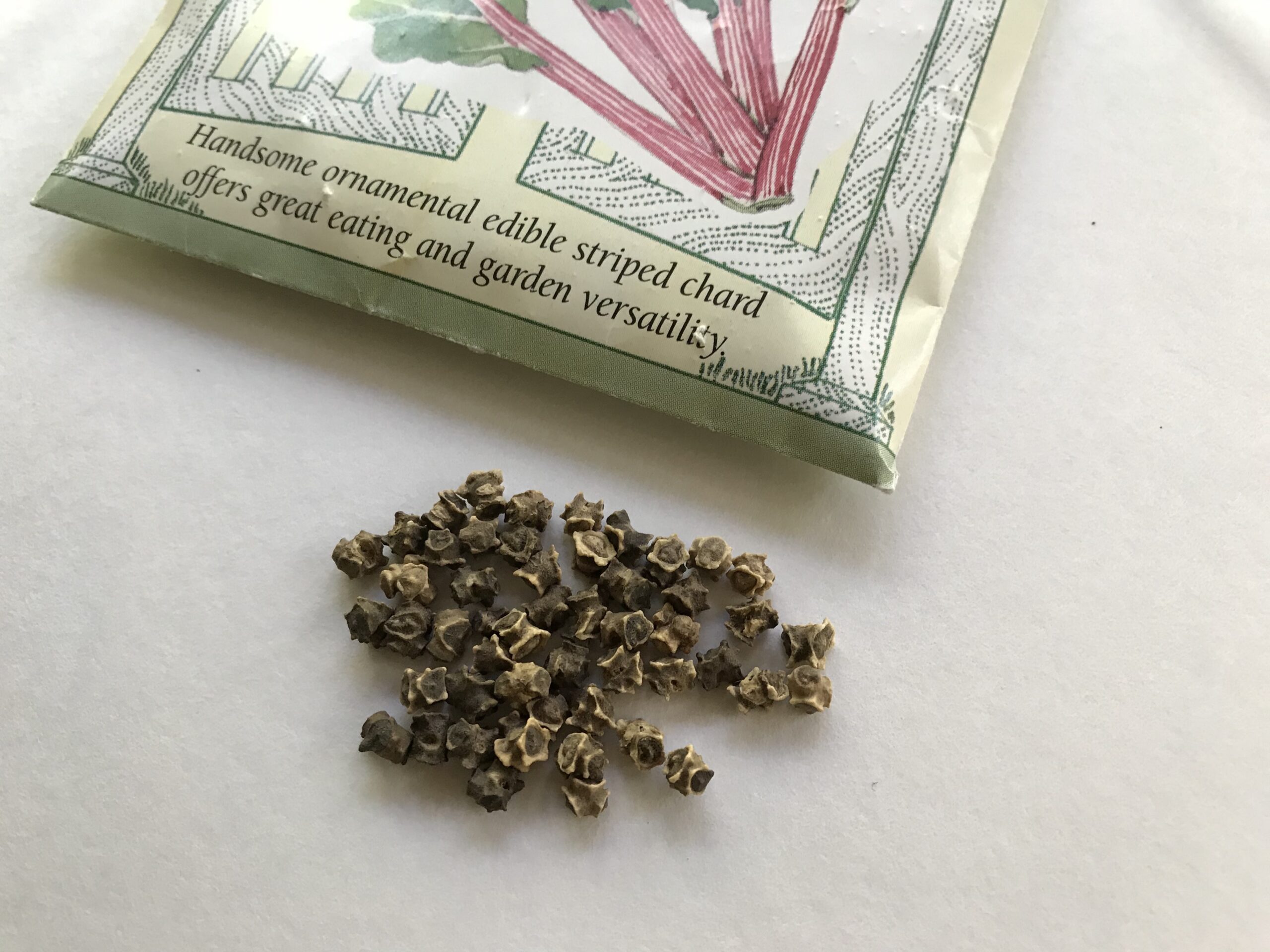If you didn’t use up all the garden seed you bought this year, much of it can be stored for use in next year’s garden – depending on the plant species. Seeds of some plants ,such as corn, parsley, onion, viola (pansies), verbena, phlox, and salvia, are not very long lived, lasting only 1 or 2 years at best. Other seeds, including beans, carrots, lettuce, peas, radishes, snapdragon, cosmos, sweet William, and zinnia, will remain viable (capable of germinating) for 3-5 years.
Seeds need to be kept cool, dark, and dry so that they retain stored carbohydrates and minimize fungal infection. You can keep the seeds in their original packets to preserve their labeling information. If you transfer the seeds to another container, be sure to label them with at least the plant name and the year the seed was purchased. Either way, be sure the seed is as dry as possible before placing in storage.
One of the more practical methods for storing small quantities is to place leftover seed in sealable jars or other airtight containers and store in a cool, dark area, such as the refrigerator (not the freezer). A layer of powdered milk or uncooked rice at the bottom of the container will absorb excess moisture. Use a paper towel to separate the seed from the absorptive material.
When it’s time to plant next season, you can do a germination test on a few seeds to see if they sprout before you plant the rest. But these days, many seed packets have only a few seeds to begin with, so the germination test may be a moot point! On the other hand, saving even a few seeds can make a big impact on next year’s gardening budget.
The following chart listing storage life for common garden species will help you decide which seeds are worth the bother. However, the conditions the seeds are stored in dramatically affects how well they will germinate next year, as much or more so than their species.
| Plant | Expected Storage Life (Years) Under Favorable Conditions |
| Vegetables | |
| bean | 3 |
| beet | 4 |
| carrot | 3 |
| chard, Swiss | 4 |
| corn, sweet | 2 |
| cucumber | 5 |
| kohlrabi | 3 |
| lettuce | 6 |
| muskmelon | 5 |
| okra | 2 |
| onion | 1 |
| parsnip | 1 |
| pea | 3 |
| pepper | 2 |
| pumpkin | 4 |
| radish | 5 |
| spinach | 3 |
| squash | 3 |
| tomato | 4 |
| turnip | 4 |
| watermelon | 4 |
| Annual Flowers | |
| ageratum | 4 |
| alyssum | 4 |
| aster | 1 |
| calendula | 5 |
| celosia | 4 |
| coleus | 1 |
| cosmos | 3 |
| dahlia | 2 |
| dianthus | 4 |
| geranium | 1 |
| hibiscus | 3 |
| hollyhock | 2 |
| impatiens | 2 |
| lobelia | 3 |
| marigold | 2 |
| nasturtium | 5 |
| nicotiana | 3 |
| pansy | 1 |
| petunia | 2 |
| phlox | 1 |
| poppy | 4 |
| salvia | 1 |
| verbena | 1 |
| vinca | 1 |
| zinnia | 5 |

